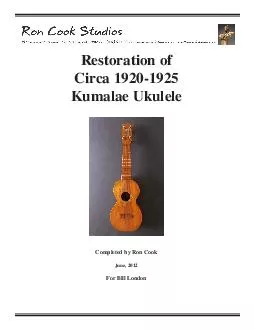PDF-Restoration of
Author : pamella-moone | Published Date : 2015-11-22
Circa 19201925 Kumalae Ukulele Completed by Ron Cook June 2012 For Bill London BackgroundJonah Kumalae made a decision to set up a booth at the 1915 Panama Pacific
Presentation Embed Code
Download Presentation
Download Presentation The PPT/PDF document "Restoration of" is the property of its rightful owner. Permission is granted to download and print the materials on this website for personal, non-commercial use only, and to display it on your personal computer provided you do not modify the materials and that you retain all copyright notices contained in the materials. By downloading content from our website, you accept the terms of this agreement.
Restoration of: Transcript
Download Rules Of Document
"Restoration of"The content belongs to its owner. You may download and print it for personal use, without modification, and keep all copyright notices. By downloading, you agree to these terms.
Related Documents














